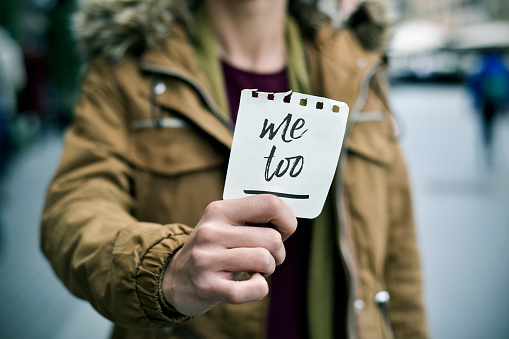
#MeToo to #NoMore: What the Silence Shattering Movement Means for Brands & Marketers
Filed Under: Grow / Maintaining Strong Brands

Katie Borman
In 2006, Tarana Burke founded the Me Too Movement to help survivors of sexual violence discover routes to healing and recovery, specifically women of color in low income communities. Rooted in the idea of “empowerment through empathy,” Me Too was created to ensure that no survivor felt alone or incapable of moving forward. Over 10 years later, the movement carries on – but now with a renewed energy and urgency that has shed a powerful light on the pervasiveness of sexual violence and harassment in our culture today.
With the rise of social media, Me Too has transformed into #MeToo and thousands of women (and men) have shared their stories as witnesses and victims of sexual mistreatment in both their personal and professional lives. What started as a tweet has morphed into a sweeping media takeover that has reached 85 countries and counting. Facebook reported that within the first 24 hours the #MeToo hashtag went live, it had been used by more than 4.7 million people in 12 million posts with 45% of users in the United States alone having a friend who posted using the term (1).
TIME Magazine named the #MeToo Movement’s “Silence Breakers” (defined as those who spoke out against sexual violence and harassment as a part of the #MeToo Movement in 2017) as their highly lauded ‘Person of the Year.’ The courageous and galvanizing actions of the “Silence Breakers” propelled a series of breaking news stories into a global solidarity movement that has shown no signs of slowing down. Cue 2018: this year, we’ve already witnessed the anniversary of the Women’s March, the birth of the #TimesUp initiative and Oprah Winfrey’s riveting speech at the Golden Globes, which challenged our society to work together in building a future where “nobody ever has to say ‘me too’ again.”
So, what does all of this mean for brands and marketers? For starters, it means that your consumers are either engaged in or, at minimum, have heard something about this movement. Whether they’ve seen news coverage on TV or Facebook posts online, consumers are not only aware of this movement but also recognize the severity of the problem at play. According to an ABC-Washington Post poll among American consumers, 75% call sexual harassment a problem in U.S. society; 64% call it a “serious problem,” which is up 17 percentage points from 2011 when this poll was last conducted. (2)
Brands and marketers should take heed and not write this issue off as just another viral social media moment. Research continues to unveil the depth and breadth of this issue, which is not only affecting consumers, but also the employees of the brands that marketing and advertising professionals serve. We now work in a climate where over half of working women in the U.S. say they have experienced harassment in the workplace (3) – and 1 in 3 women ages 18-34 says she has been sexually harassed in the workplace (4).
Now more than ever, it’s imperative that brands act and speak with care as survivors continue to step forward. Marketers, in turn, must prioritize empathy, accountability, and a people-first mantra that puts the needs and complexities of both their consumers and employees above all else. And, as the #MeToo Movement continues to expand its global conversation around sexual violence to include the needs of a more diverse survivorship (young people, LGBTQA people, people living with disabilities, communities of color), brands must continue to listen to their consumers with respectful and inclusive ears.
When TIME magazine announced that the #MeToo’s “Silence Breakers” had been named their Person of the Year, Burke released a personal statement with a powerful call to end silence:
“We need a complete cultural transformation if we are to eradicate sexual assault in our lifetimes. It means we must build our families differently, engage our communities and confront some of our long-held assumptions about ourselves. Today’s announcement is an opportunity for all of us to take a hard look in the mirror and answer the question: ‘When you hear #MeToo, will you stand up and say #NoMore?’ Let’s get to work.”
As brands and marketers we must ask, “How will we better engage communities and play an active role in transforming a toxic culture to bring about necessary change?” The time has come for us to empathize with and empower one another. The time has come for us to stand up and get to work.
explore featured
Case studies
